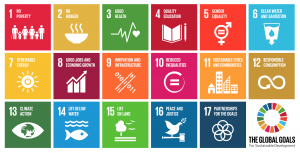 The 17 Sustainable Development Goals (SDGs) for 2030 were adopted in September 2015, each of which has its own set of targets. SDG 3 (“ensure healthy lives and promote well-being for all at all ages”) targets include reducing the global maternal mortality ratio (MMR) to less than 70 deaths per 100,000 live births, ensuring universal access to sexual and reproductive health care services and eliminating preventable deaths of children under 5 years of age. The United Nations, the World Health Organization and many other stakeholders are in the process of improving ways to measure progress toward these targets. For example, the Ending Preventable Maternal Mortality (EPMM) working group has developed a set of proximal maternal health indicators that fed into the Indicator and monitoring framework for the Global Strategy for Women’s, Children’s and Adolescents’ Health (2016-2030) and is currently developing indicators for more distal social, political and economic determinants of maternal health outcomes that will be reviewed by an expert advisory group.
The 17 Sustainable Development Goals (SDGs) for 2030 were adopted in September 2015, each of which has its own set of targets. SDG 3 (“ensure healthy lives and promote well-being for all at all ages”) targets include reducing the global maternal mortality ratio (MMR) to less than 70 deaths per 100,000 live births, ensuring universal access to sexual and reproductive health care services and eliminating preventable deaths of children under 5 years of age. The United Nations, the World Health Organization and many other stakeholders are in the process of improving ways to measure progress toward these targets. For example, the Ending Preventable Maternal Mortality (EPMM) working group has developed a set of proximal maternal health indicators that fed into the Indicator and monitoring framework for the Global Strategy for Women’s, Children’s and Adolescents’ Health (2016-2030) and is currently developing indicators for more distal social, political and economic determinants of maternal health outcomes that will be reviewed by an expert advisory group.
One of the defining features of the SDGs is an increased emphasis on equity and data disaggregation. Whereas the Millennium Development Goals were largely focused on improving global and regional outcomes on average, the SDGs call for efforts to improve outcomes at the national and local levels with specific attention to vulnerable populations. The SDG agenda requires access to accurate, disaggregated data and data infrastructure. Strong health information systems are necessary for collecting, measuring and tracking data in order to quantify progress.
Disaggregated data on maternal mortality is not available for the majority of countries around the world, which indicates an inability to identify the most vulnerable subgroups of women. Disaggregating data by factors such as gender, age, socioeconomic status, ethnicity, education level, place of residence and other social determinants is necessary for gaining a clearer picture of who is most at risk for suffering adverse health outcomes; yet the majority of countries around the world do not have access to quality data. How can countries design effective programming if they do not know where to intervene and whom to target?
Improving health outcomes for mothers and babies starts with collecting better data. The Independent Accountability Panel (IAP), a group of international experts gathered by the UN Secretary-General to report annually on progress toward achieving the SDGs, released its first report highlighting monitoring as one of the key areas needing improvement. The IAP calls for efforts to strengthen health information systems and ensure the capability of national statistical agencies to collect and analyze data appropriately. Access to data at the local, national and global levels is a key component of accountability. The IAP also emphasizes the importance of disaggregating data by factors such as wealth, age and place of residence to understand and address inequities. Less than 40% of countries around the world have data on maternal mortality, stillbirths and sexual violence disaggregated by wealth quintile, despite the large body of evidence illustrating that poorer women have worse maternal health outcomes.
In the year since the SDGs were adopted, numerous stakeholders from different sectors have demonstrated a strong dedication to achieving progress in maternal and newborn health across the globe. Hopefully by the second anniversary next year, improvements in data collection and management will shed light on the complexities of maternal mortality and morbidity and persistent global inequities so that we can achieve the SDGs by 2030.
—
Read more about the SDGs and how they relate to maternal and newborn health on the MHTF blog.
Learn about the MHTF’s role in developing indicators to monitor efforts toward ending preventable maternal mortality.
Read the 2016 Sustainable Development Goals Report.
Read the 2016 Independent Accountability Panel (IAP) Report.
